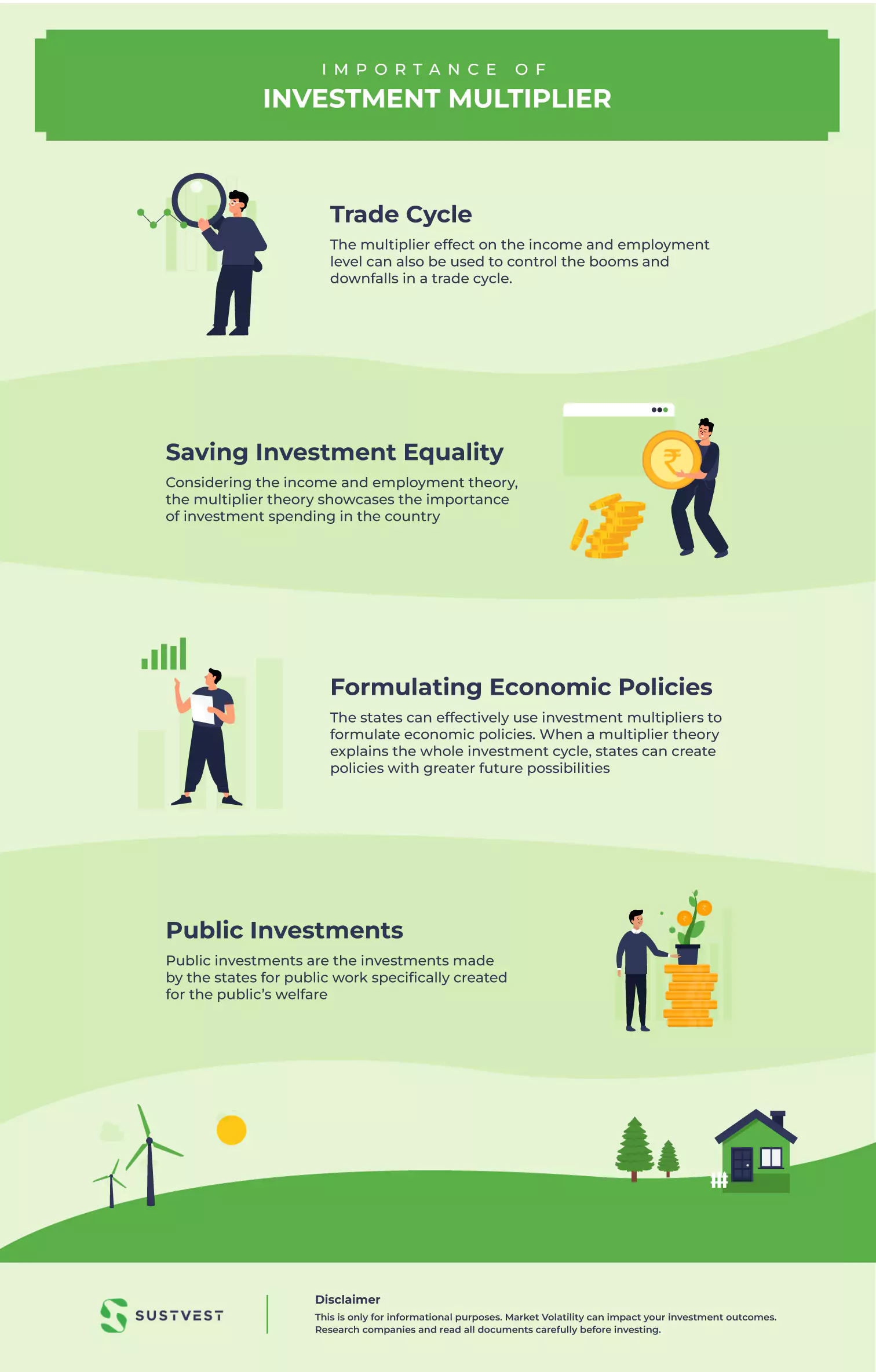In today’s world of finances, there’s a popular concept, i.e., investment multipliers. This theory is typically responsible for handling the investment spending in a state or entire country to grow, flourish and accumulate economic activities. An investment theory is a complex term to understand how it manages the whole economy’s business cycles.
If you also want to understand the Investment Multipliers and its effectiveness towards the investment, then keep reading this article.
Today, we have discussed everything from what is investment multiplier, how it contributes to the economy, and its importance.
Let’s get started!

What Is Investment Multiplier and Its Working?
Multipliers refers to an economic concept that defines how continuous investment spending changes affect the economy’s significant activities. Simply put, when anyone (an individual or a whole business) spends their money-making investments, a chain reaction triggers automatically.
For instance, you’ve set up a new factory, now you will need resources, workers, electricity, and much more. When you purchase raw materials and hire labor forces, your money circulates to the suppliers and workers. They also use that money for other businesses. And this is how the cycle of investment multiplier works.
Read More: 16 Best Low Risk Investments With High Returns In India 2023
What Is the Investment Multiplier Formula?
As the name sounds, the multipliers formula is a formula to calculate the impact of change in investment spending over economic activities.
The formula is:
Multiplier = 1 / (1 – MPC)
Given, MPC = Marginal Propensity to Consume.
MPC is a fraction of an additional amount of your income after cutting down your usual bills and expenses. For instance, If you need ₹50,000 for your monthly expenses and you earn ₹60,000. Then, ₹10,000 is an additional income; now, if your MPC is 0.75, you spend ₹7,500 on goods and services and save only ₹2,500.
Find Out: Best Option To Invest Money In India In 2023
Importance of Investment Multiplier
1. Trade Cycle
The multiplier effect on the income and employment level can also be used to control the booms and downfalls in a trade cycle. So if you’re confused about “what is a multiplier in trading,” then you should understand that inflation is getting its pace. A state has to inform people to make fewer investments, as it will lead to a simultaneous decline in income and employment levels. However, when deflation is getting its pace, the state has to encourage people to invest more to increase the overall income and employment level.
2. Saving Investment Equality
Considering the income and employment theory, the multiplier theory showcases the importance of investment spending in the country. When investment spending changes in a country, it fluctuates the income and employment levels. Therefore, investment spending impacts the entire economy from the investment multiplier theory.
3. Formulating Economic Policies
The states can effectively use investment multipliers to formulate economic policies. When a multiplier theory explains the whole investment cycle, states can create policies with greater future possibilities.
4. Public Investments
Public investments are the investments made by the states for public work specifically created for the public’s welfare. Multiplier theory also plays a great role in these public investments. These public investments don’t have any profit motive and help maintain the required employment levels even during the inflation and deflation period.
Check Out: 7 Best Investment Options in India – Get Guaranteed Return On Investment More Than Fixed Deposit

Examples of Investment Multiplier
From “what is an investment multiplier” to its “real-time importance,” we have discussed everything. Now, let’s understand this concept through an example.
Imagine the government has initiated a project of ₹500 crore to build a public shopping mall.
This project will require hiring several engineers, workers, material suppliers, etc.; they will all receive the income, and their money will be distributed to even more individuals and businesses.
Let’s understand the implication of the “What is the investment multipliers formula?”
Investment Multiplier for Suppliers, with MPC = 0.5:
Investment Multiplier = 1 ÷ (1 – MPC)
= 1 ÷ (1 – 0.5) = 2
Here, it means that whenever the government invests Rs.1, it will generate an income of Rs.2
Investment Multiplier for Workers, with MPC = 0.2. It will generate an income of Rs.5 after every rupee the government invests in this project.
These Investment Multipliers can calculate the absolute income from the amount initially invested for the project. You can also calculate the investment multiplier as follows:
Investment Multiplier = (Change In Income) ÷ (Change In Investment)
You can also say that the investment multiplier = 1 ÷ MPS.
Therefore, these investment multiplier has generated the income as per follows:
Change in Income ÷ 500 = 1 ÷ 0.2
Change in Income = 500 ÷ 0.2
= ₹2500 crores
In simple words, ₹500 crore investment has turned out to be an income of ₹2500 crore.
FAQs
What is meant by an investment multiplier?
It is a concept used to check that the expense of one’s income is the income of another’s person.
What is the formula for investment multiplier?
The formula for this is:
Multiplier = 1 / (1 – MPC)
Where MPC Stands for Marginal Propensity to Consume,
M = Marginal
P = Propensity
C = Consume
What’s the use of Multiplier?
This concept contributes to Keynes’s checking income and employment theory. To understand the fluctuations and create policies accordingly.
Conclusion
An investment multiplier is an economic concept that manages investment spending across the state or country. In this guide, we have simplified this theory and discussed it very easily. We hope you understand all the required aspects regarding the multiplier theory. Get in touch with SustVest to let experts guide you

Founder of Sustvest
Hardik completed his B.Tech from BITS Pilani. Keeping the current global scenario, the growth of renewable energy in mind, and people looking for investment opportunities in mind he founded SustVest ( formerly, Solar Grid X ) in 2018. This venture led him to achieve the ‘Emerging Fintech Talent of the Year in MENA region ‘ in October 2019.




